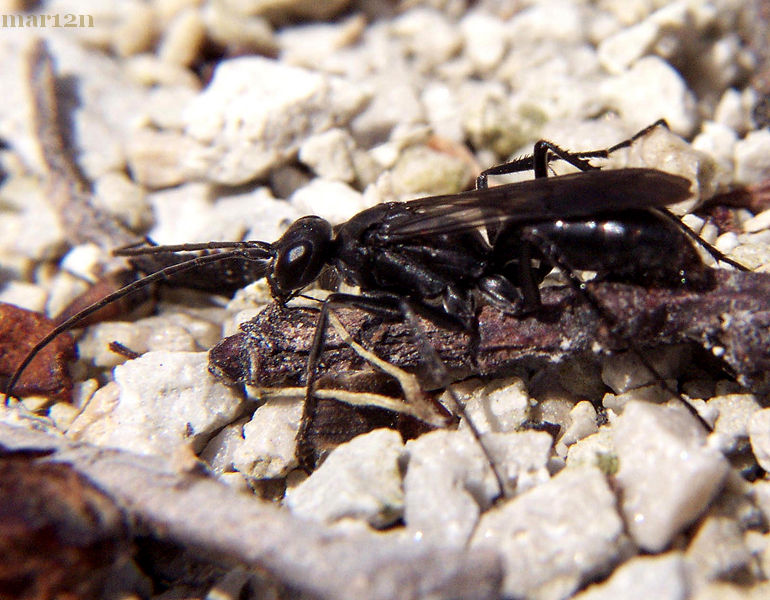 |
Family Pompilidae – Spider Wasps Live adult wasps photographed at Illinois, USA and Caracas, Venezuela. These wasps use paralyzed spiders as food for their developing larvae. Bees & Wasps Index | Parasitica | Aculeata | Symphyta |
 |
|
There are approximately 300 species of spider wasps in North America. Some species sting and paralyze their prey and then transport it to a specially constructed nest before laying an egg. Other species leave the paralyzed spider in its nest and lay an egg upon it. This particular wasp is one which attacks tarantulas. An adult female will scrabble rapidly across the ground searching for a tarantula burrow, or a male tarantula out and about scouting for a mate. The wasp will then sting the spider, paralyzing it almost instantly. After dragging the now-helpless spider into a burrow, she lays a single egg upon it and covers the entrance. The egg hatches, and the larva uses the still living host as its food source.
|
 |
Order Hymenoptera: Bees, Wasps, & Ants Hymenoptera (Latin for membrane wing) is a vast assemblage of insects second only to Coleoptera (beetles) in the number of described species. Hymenoptera number some 115,000 species – of which 18,000 live in North America. Hymenopterans inhabit a wide variety of habitats, and show an incredible diversity in size, behavior, structure and color. Insects & Spiders | Bees & Wasps Index | Bees & Wasps Main | Beetles Index |

